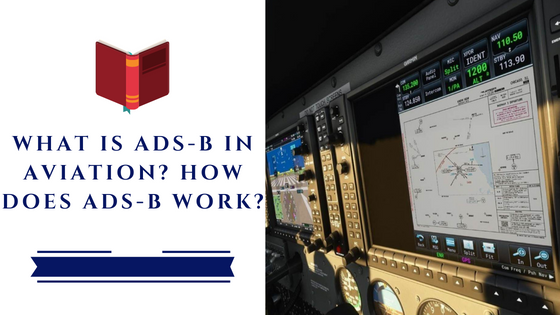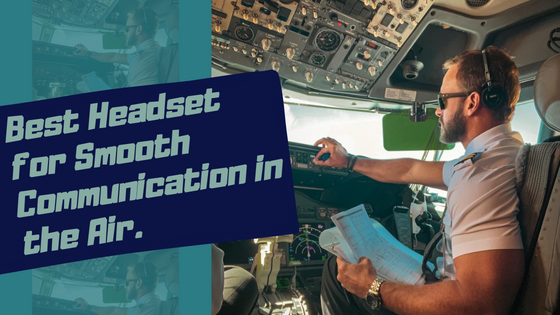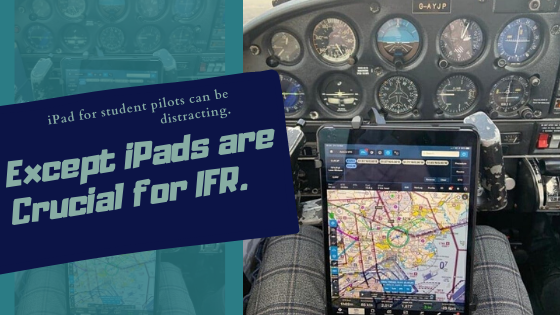What is ADS-B & How does it work?

To put it simply, ADS-B is a system whereby an aircraft automatically transmits positional data and other information to ground stations and other aircraft.
An aircraft having the ADS-B system determine its location using GPS and other navigational data using onboard equipment.
A transponder then transmits that information once per second to ground stations which relay the information to ATC and aircraft equipped to receive it.
What is ADS-B in aviation?
ADS-B means Automatic Dependent Surveillance-Broadcast. It is a new generation of technology to replace radars shortly.
Radar is an aid for Air Traffic Controllers to see the aircraft’s location and identification.
That’s how air traffic controllers provide pilots guidance:
- For maintaining a specific altitude;
- And a course to avoid collision with other aircraft.
Nevertheless, several devastating air crashes have occurred due to air traffic collisions. Crashing with another aircraft on the surface is not as devastating but can become costly for the aircraft operator.
Thus ADS-B can play a better role in preventing accidents in congested airspace.
Hence, ADS-B may replace the radar detection system entirely in the future. There is no flaw in the radar detection system. This system has been in use for decades.
However, ADS-B can provide information much more accurately than radar.
Flying in radar-based airspace, the pilot must rely on the air traffic controllers and communicate continuously to avoid collisions.
So how is ADS-B any different from the radar-based system?
Today, a pilot has to depend entirely on what the air traffic controller sees in their radar detection system to avoid a collision.
But using:
- ADS-B compliant avionics;
- A display onboard the aircraft, such as a tablet;
- A portable ADS-B receiver,
A pilot will see what an air traffic controller is seeing. Knowing ahead of the airplane route, pilots can better decide on IFR or MVFR flying conditions.
Therefore a pilot flying an airplane equipped with ADS-B equipment can deviate long before going to a collision course.
ADS-B uses satellites to define the location of an aircraft. Thus the GPS and satellites aid the ADS-B display a more accurate position of an airplane.
For ADS-B technology to work precisely, aircraft and ground controllers must be equipped with ADS-B in and out.
Student pilots that haven’t heard much about ADS-B are unaware of ADS-b in and ADS-B out.
By unpacking the acronym, you can understand what ADS-B is and what it involves.
ADS-B stands for:
Automatic – The system is automated because it requires no pilot input or external interrogation.
Dependent – The system depends on positional information and other data from onboard GPS and navigational equipment.
Surveillance – The system provides 3-D position, flight ID, and other information to enable real-time airspace surveillance.
Broadcast – ADS-B continually broadcasts to ground stations and nearby aircraft with ADS-B to receive that information.
The ADS-B system broadcasts variable types of data and may include the following:
- Flight Identification
- ICAO 24-bit Aircraft Address (a globally unique airframe code)
- Position (latitude and longitude coordinates)
- Position Integrity/Accuracy (GPS horizontal protection limit)
- Barometric and Geometric Altitudes
- Vertical rate (rate of climb or descent)
- Track angle and ground speed
- Emergency indication (when emergency code is selected)
- Unique position identification (when IDENT is selected)
Data is broadcast through the ADS-B system every half second on a 1090MHz digital data link. ADS-B can also transmit data on the 978 MHz UAT frequency.

Indeed, ADS-B is a neat tool that offers pilots and ATC many safety and efficiency advantages.
Most importantly, ADS-B goes a long way toward improving situational awareness for pilots and ATC. Pilots flying on suitably equipped aircraft will see real-time ATC data and a detailed weather picture on displays in their cockpits.
Now, ATC has access to a more detailed view than ever before.
Information of significance to the flight, such as airspace and runway restrictions, will also be available immediately.
Pilots can view this data on either cockpit displays or tablets.
The data includes (but is not limited to) TFRs, PIREPs, NOTAMs, and more.
This added level of information enables advanced ATC procedures, which allow aircraft to fly closer together with fewer instructions from the ground.
Shorter and more direct routes and fewer delays are an immediate consequence of the widespread application of ADS-B.
Less time wasted in holding patterns and waiting for clearances also means that ADS-B makes aviation more environmentally friendly due to lower carbon emissions.
ADS-B also offers improved visibility compared to traditional radar surveillance as it is not limited by the sight restrictions which affect radar. Without line-of-sight limitations, ADS-B is critically essential in remote areas with limited radar coverage.
Of course, some restrictions will always apply, as the ability of ground stations to receive a broadcast signal will depend on the distance and altitude of the broadcasting aircraft and a line of sight unobstructed by terrain.
However, the maximum range of a ground station may exceed 250 miles, and surveillance extends close to the surface in the airspace near a ground station.
Due to its apparent advantages from a safety perspective, ADS-B has become the standard for airspace surveillance in the global aviation industry.
As of 2020, the minimum component for aircraft, ADS-B Out, has become mandatory for aircraft operating in the airspaces of the US, the EU, and Canada, as well as large parts of the Asia-Pacific region.
How has the ADS-B out rule affected the aircraft operators?
But airplanes not equipped with ADS-B out avionics will be denied access from entering ADS-B rule airspace.
As more and more air traffic controllers and aircraft comply with ADS-B in and ADS-B out rules, you can say that aircraft without ADS-B equipment will be considered not airworthy for flying soon.
At least an aircraft must have an S mode transponder to operate so that the air traffic controller can see information about your flight.
Without an S mode transponder, your aircraft can not enter the airspace as you will not transmit adequate information to avoid collision inside the airspace.
The air traffic controllers in an ADS-B rule maintain a smooth flow of flights in a congested area, depending on the information of flights using ADS-B display and receiver.
Entering ADS-B rule airspace with no ADS-B out equipment in the airplane may hamper the smooth flow of traffic in the area. Thus the air traffic controller will not get accurate flight information on your aircraft.
So if you, as a student pilot, want to have an ADS-B receiver, that is not a bad idea. You can make a small investment to make your flight more entertaining and develop situational awareness.
But it is not going to support you entering ADS-B rule airspace.
Sources:
● Airservices. (2020, November 16). How ads-B works. Airservices. Retrieved November 21, 2022, from https://www.airservicesaustralia.com/about-us/projects/ads-b/how-ads-b-works/
● FAA. (2022, April 15). Benefits. Benefits | Federal Aviation Administration. Retrieved November 21, 2022, from https://www.faa.gov/air_traffic/technology/equipadsb/capabilities/benefits#:~:text=ADS%2DB%20In%20gives%20pilots,below%20the%20receiving%20aircraft’s%20position.
Image Source: navigraph_team via Instagram.





